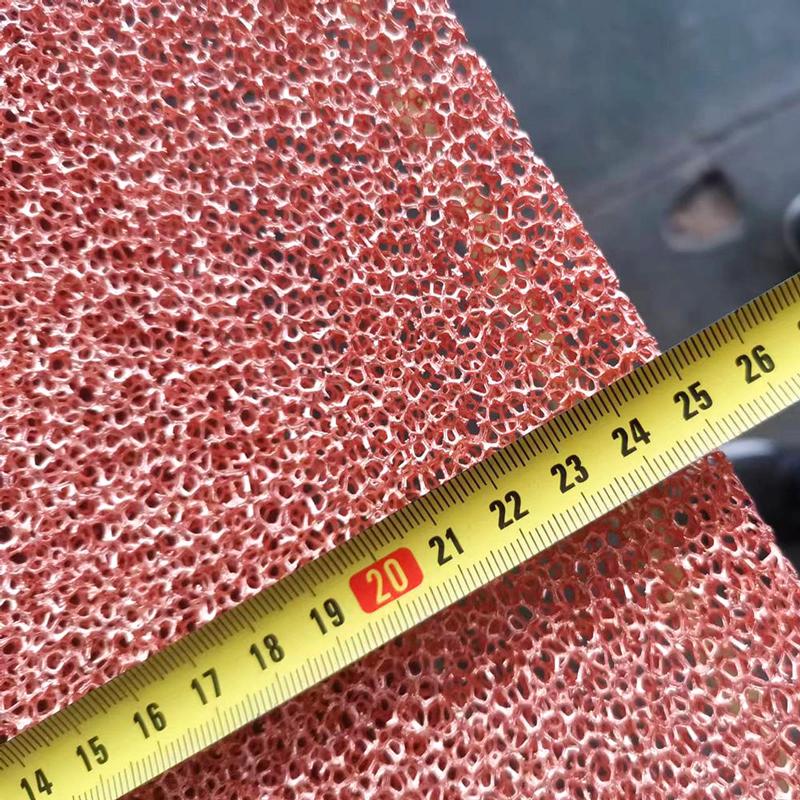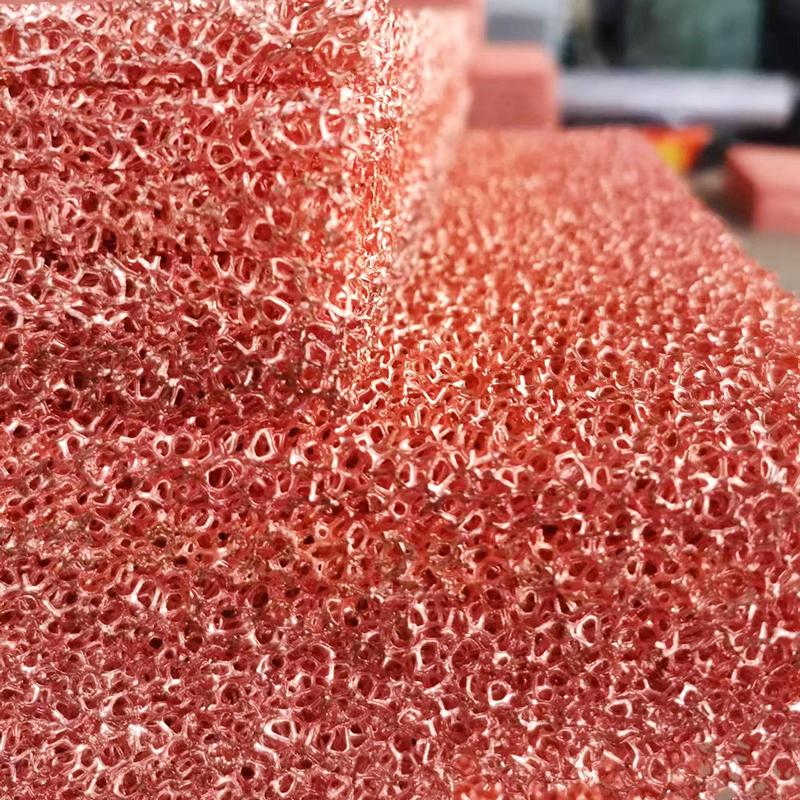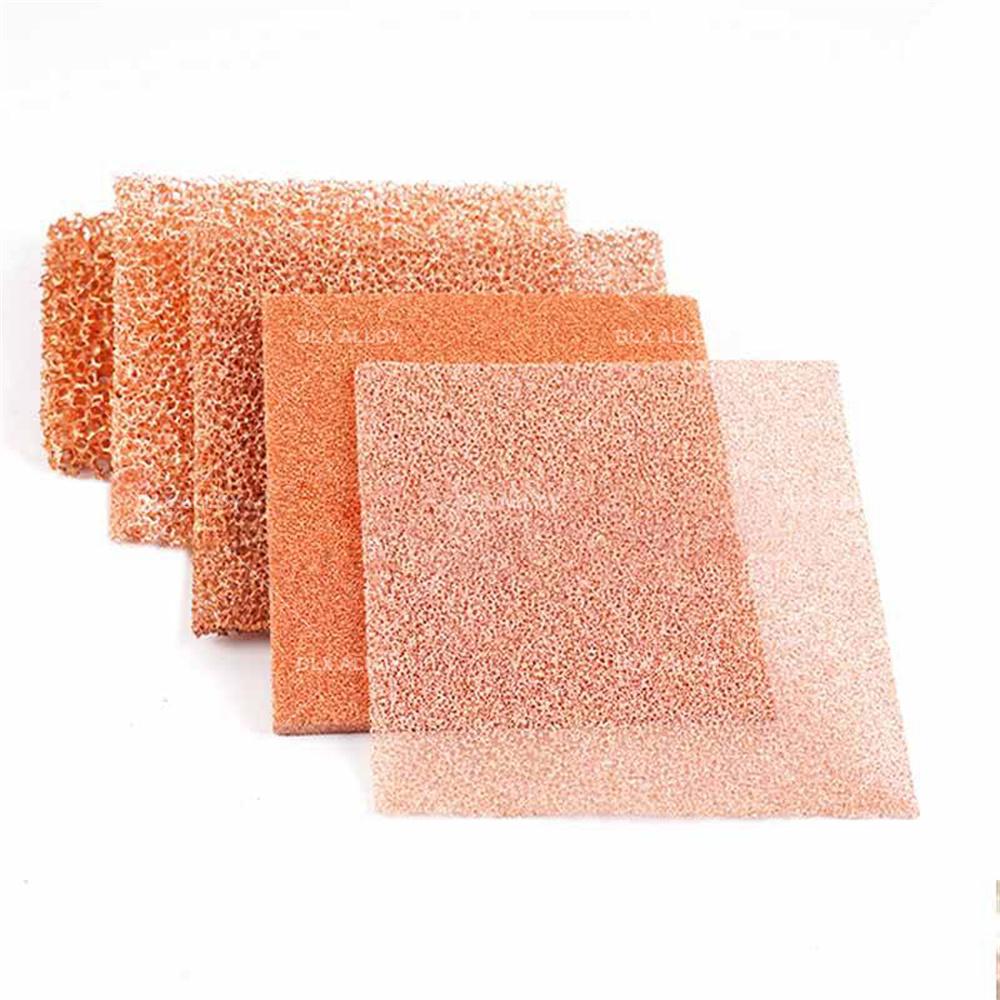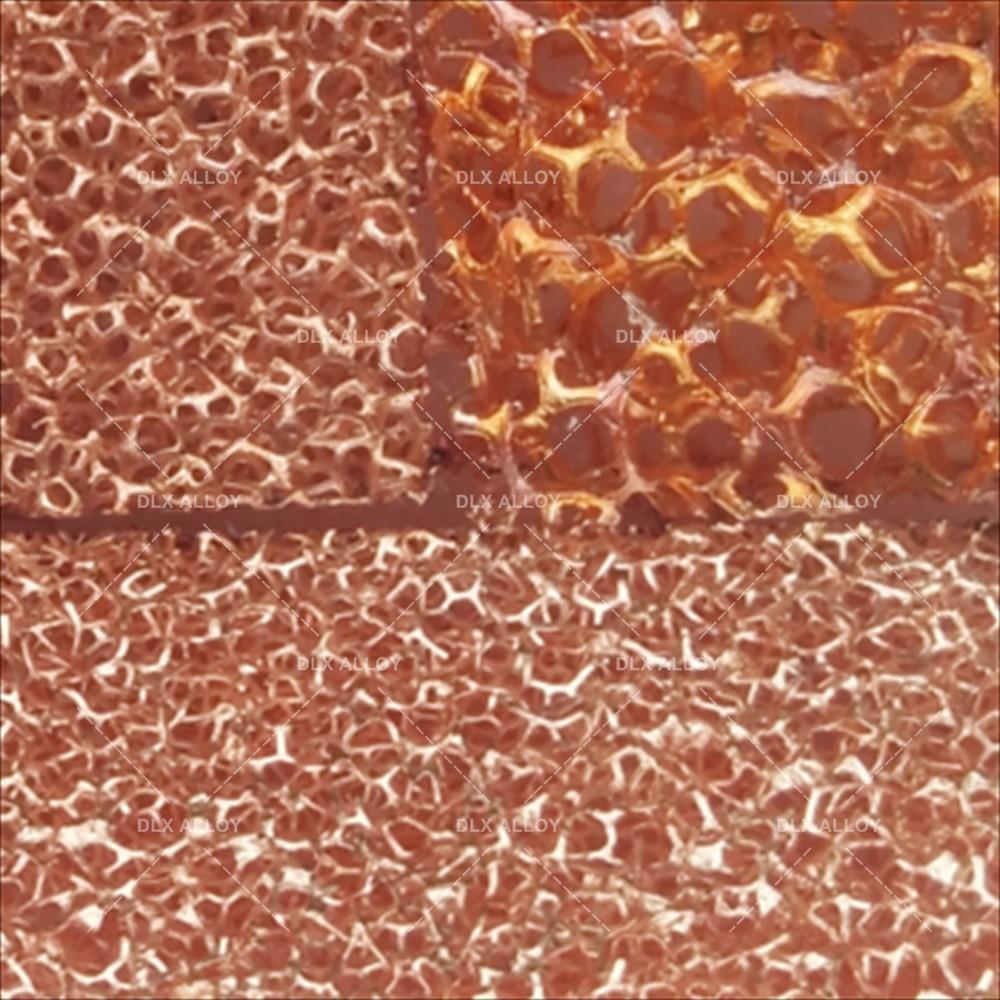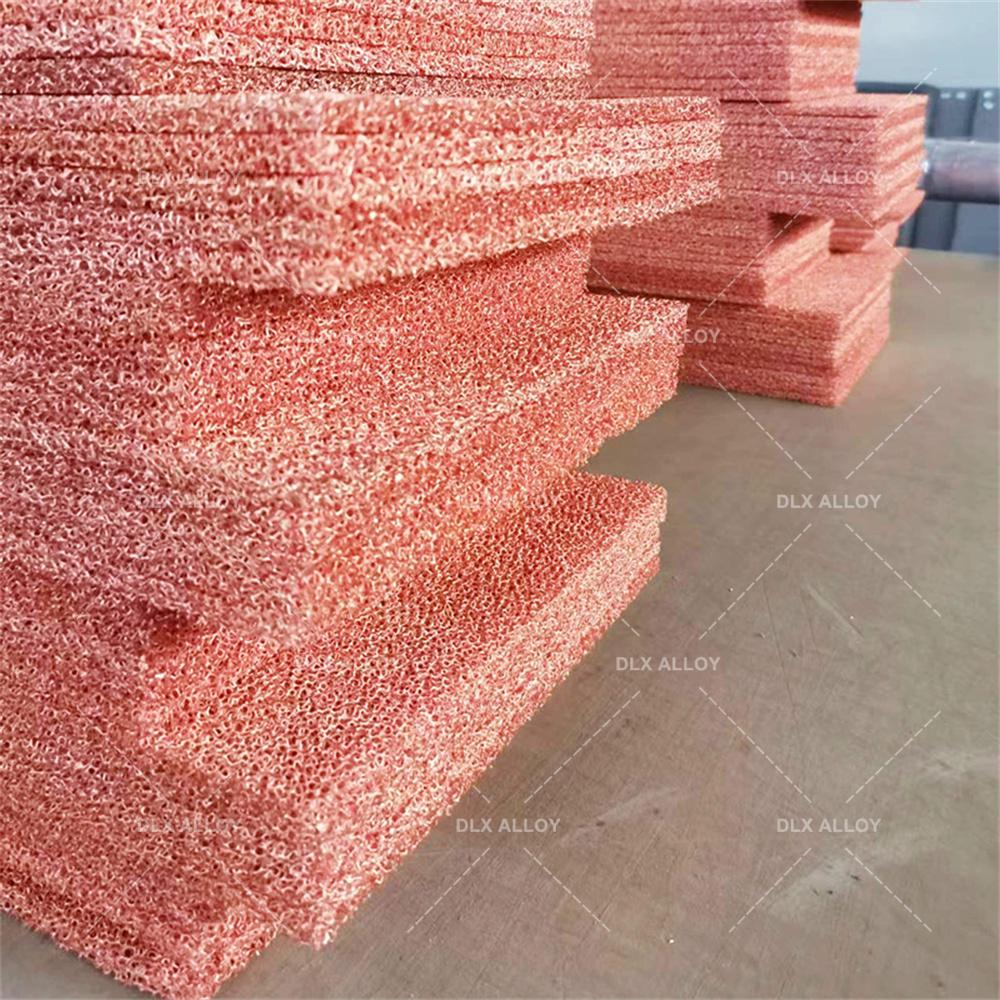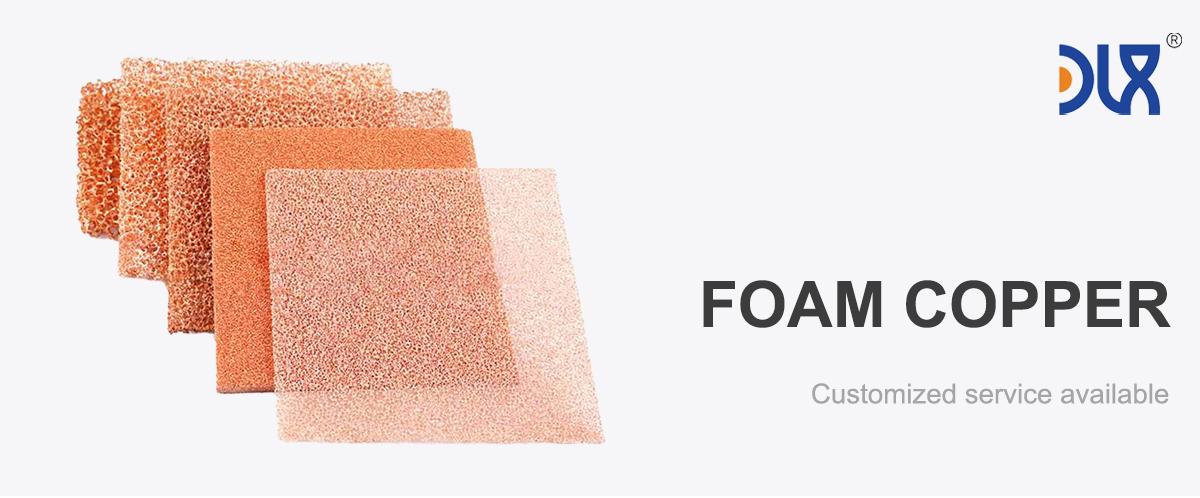
Our Copper Foam with 100 pores per inch (PPI) is a game-changer for fuel cell and electrochemical applications, delivering top-notch performance for clean energy systems. Lightweight, highly porous, and packed with electrical conductivity, it’s transforming industries from renewable energy to automotive. Let’s dive into what makes our copper foam stand out, explore its applications, unpack industry trends, and show why we’re leading the way in electrochemical solutions.
For more details, pls directly contact us.
Our copper foam is a high-purity, porous material with a three-dimensional, open-cell structure, featuring 100 PPI and up to 95% porosity. Weighing just 0.5-1.5 g/cm³, it’s ultra-lightweight yet durable, making it ideal for compact energy systems. Its high electrical conductivity boosts electrode efficiency, while the 100 PPI structure provides a massive surface area for electrochemical reactions. The foam’s thermal conductivity helps manage heat, and its good corrosion resistance ensures reliability in electrolyte-heavy environments. We craft it using advanced electrodeposition and 3D printing techniques, allowing us to customize pore size and density to fit your specific needs. Whether you’re powering a fuel cell or building an electrochemical sensor, our foam delivers unmatched results.
For more details, pls directly contact us.
Fuel cells and electrochemical systems are at the heart of the clean energy revolution, and our copper foam is built to make them perform better. Its 100 PPI porosity maximizes electrode surface area, allowing more active material to interact with electrolytes for faster reactions and higher power output. The high electrical conductivity reduces internal resistance, boosting energy efficiency in fuel cells and batteries. The foam’s lightweight design cuts system weight, a big win for applications like electric vehicles (EVs) or portable electronics. Its thermal conductivity keeps temperatures in check during high-power cycles, and its corrosion resistance ensures longevity in harsh environments. This combination of efficiency, lightweight design, and durability makes our foam a must-have for next-gen energy solutions.
Industry Analysis: The Copper Foam Market Surge
The copper foam market is booming, driven by the global push for clean energy and efficient electrochemical systems. Valued at $180.5 million in 2023, it’s projected to hit $246.7 million by 2030, growing at a CAGR of 5.42%. The renewable energy sector, particularly hydrogen fuel cells, is a major driver, as industries seek high-performance materials to power clean energy solutions. Automotive and aerospace are also jumping on board, using copper foam in EVs and lightweight energy systems. Electronics and chemical processing industries are driving demand for efficient electrochemical sensors and electrolyzers.
Sustainability is a key force in this market. Stricter environmental regulations and consumer demand for green solutions are pushing industries toward recyclable materials and eco-friendly production. Our copper foam fits perfectly—it’s fully recyclable and made with energy-efficient processes. Innovations like nanostructured foams and 3D printing are opening new possibilities, allowing us to create tailored electrode structures for specific applications. As industries prioritize efficiency, durability, and sustainability, our copper foam is poised to lead the fuel cell and electrochemical market.
Applications: Where Our Copper Foam Powers Up
Our copper foam with 100 PPI is a versatile material, delivering results across a range of fuel cell and electrochemical applications:
Fuel Cell Electrodes: It boosts efficiency in hydrogen fuel cells, improving power output for EVs, aerospace, and stationary power systems.
Battery Systems: Used in lithium-ion and other batteries, our foam enhances electrode performance for higher capacity and faster charging.
Electrochemical Sensors: Its high surface area supports sensitive, accurate sensors for environmental monitoring and medical diagnostics.
Water Splitting: The foam optimizes electrodes for hydrogen production, driving efficiency in clean energy systems.
CO2 Reduction: It supports catalysts for converting CO2 into valuable fuels, contributing to carbon-neutral technologies.
Chemical Processing: Our foam enhances electrochemical reactors for processes like electroplating and chemical synthesis.
Industry Trends: What’s Driving Copper Foam Forward
The copper foam market is moving fast, and we’re staying ahead of the curve. Here are the trends shaping the industry:
Clean Energy Surge: The rise of hydrogen fuel cells and renewable energy is driving demand for high-efficiency electrode materials like our foam.
Electrification Boom: EVs and hybrid vehicles are fueling demand for lightweight, high-performance materials for energy systems.
Sustainability Focus: Eco-friendly production and recyclable materials are must-haves, and our foam delivers with sustainable manufacturing.
Nanostructured Foams: Advances in nanotechnology are enabling ultra-high-surface-area foams, boosting electrochemical performance.
Customization Demand: 3D printing and electroforming let us tailor foam structures for specific applications, optimizing efficiency.
Electronics Growth: The expansion of IoT and wearable devices is driving demand for compact, efficient electrochemical systems.
Why Choose Our Copper Foam?
We’re not just making copper foam—we’re crafting solutions that power the clean energy future. Here’s why our 100 PPI copper foam stands out:
High Porosity: With 100 PPI and up to 95% porosity, our foam maximizes electrode efficiency for faster reactions and higher power.
Superior Conductivity: High electrical conductivity reduces resistance, boosting energy efficiency in fuel cells and batteries.
Lightweight Design: At 0.5-1.5 g/cm³, our foam cuts system weight without sacrificing durability, ideal for EVs and portable systems.
Thermal Management: Excellent conductivity keeps temperatures in check, ensuring consistent performance under high loads.
Eco-Friendly Edge: Fully recyclable and produced with sustainable methods, our foam aligns with green initiatives and global standards.
Expert Support: Our team partners with you from design to deployment, offering expertise to tackle your toughest electrochemical challenges.
Comparison Parameters Table
Parameter | Copper Foam (100 PPI) | Carbon-Based Electrodes | Stainless Steel Mesh | |
|---|---|---|---|---|
Electrical Conductivity | High (excellent for energy transfer) | Moderate (higher resistance) | Moderate (lower than copper) | Moderate (lower than copper) |
Porosity | High (100 PPI, up to 95%) | Moderate (inconsistent pores) | Low (limited surface area) | Moderate (less uniform than copper) |
Weight | Lightweight (0.5-1.5 g/cm³) | Lightweight (but less durable) | Heavy (denser than copper) | Lightweight (but less porous) |
Corrosion Resistance | Good (resists moderate electrolytes) | Good (degrades over time) | Moderate (prone to corrosion) | Moderate (prone to oxidation) |
Mechanical Durability | High (handles high cycles) | Low (brittle under stress) | Moderate (less durable than copper) | Moderate (weaker under stress) |
Thermal Conductivity | High (effective heat dissipation) | Low (poor heat management) | Moderate (lower than copper) | Moderate (lower than copper) |
Recyclability | Fully recyclable | Limited (degrades over time) | Recyclable (energy-intensive) | Recyclable (complex process) |
Cost-Effectiveness | Moderate (long lifespan, high performance) | Low (frequent replacements needed) | Low (shorter lifespan) | Low (cheaper but less effective) |
Our copper foam outperforms other materials for fuel cell and electrochemical applications. Carbon-based electrodes are lightweight but lack the durability and conductivity needed for high-performance systems. Stainless steel mesh is durable but heavy and less porous, limiting electrode efficiency. Aluminum foam offers weight savings but falls short in electrical conductivity and corrosion resistance. Our copper foam hits the sweet spot: ultra-high porosity, lightweight design, superior conductivity, and solid durability, all backed by sustainable production.
We go beyond the product itself. Our end-to-end support—from custom design consultations to post-production service—ensures you get the most out of our foam. Our advanced manufacturing techniques, like electrodeposition and 3D printing, deliver consistent quality and tailored solutions that competitors can’t match.
Looking to the Future
The future of copper foam for fuel cells and electrochemical applications is electric, and we’re excited to lead the charge. As clean energy and electrified systems continue to grow, the demand for high-performance, sustainable materials will skyrocket. We’re investing heavily in R&D to push the boundaries of what our foam can do, from developing nanostructured foams for ultra-efficient fuel cells to high-density options for advanced electrolyzers. Our commitment to sustainability means we’re constantly refining our processes to reduce waste and energy use, aligning with global environmental goals.
Our copper foam with 100 PPI isn’t just a material—it’s a catalyst for the clean energy revolution. It’s lightweight, efficient, and built to power the next generation of fuel cells and electrochemical systems. Ready to take your project to the next level? Let’s talk about making it happen.
For more details, pls directly contact us.
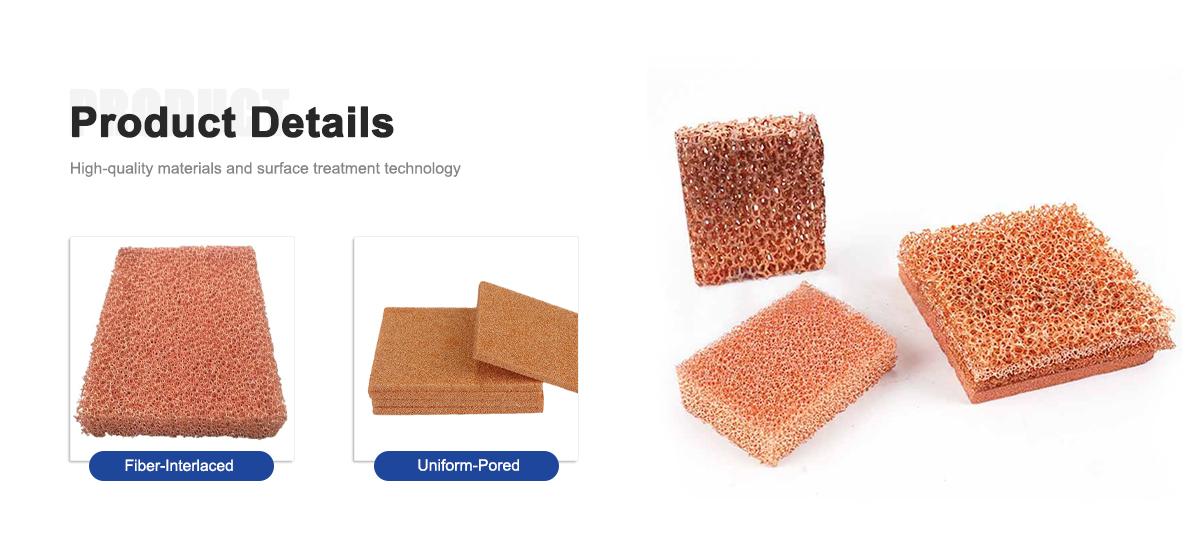
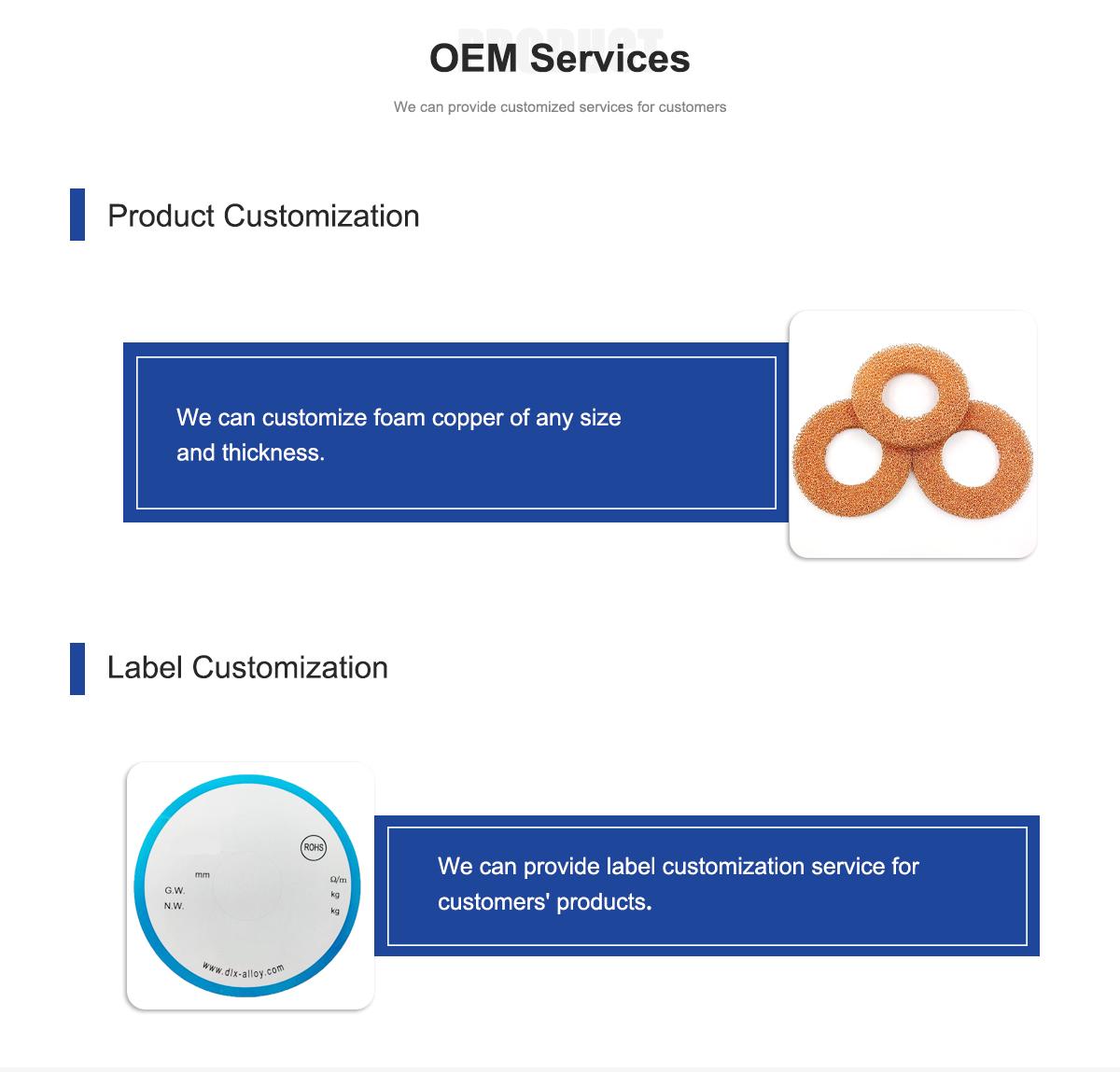
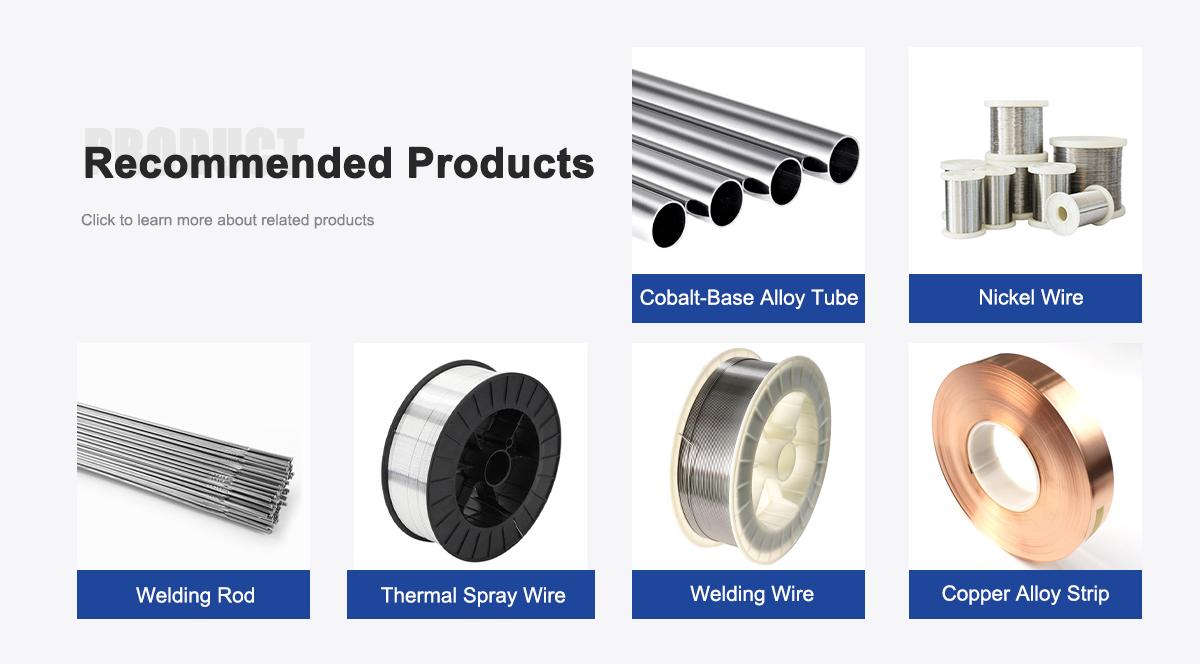
About Us:
Our 12,000㎡ factory is equipped with complete capabilities for research, production, testing, and packaging. We strictly adhere to ISO 9001 standards in our production processes, with an annual output of 1,200 tons. This ensures that we meet both quantity and quality demands. Furthermore, all products undergo rigorous simulated environment testing including high temperature, high pressure, and corrosion tests before being dispatched, ensuring they meet customer specifications.
For all our clients, we offer timely and multilingual after-sales support and technical consulting, helping you resolve any issues swiftly and efficiently.

Client Visits
Building Stronger Partnerships

We support all kinds of testing:


FAQs:
What is copper foam 100 PPI?
It’s a lightweight, highly porous copper-based material with 100 pores per inch (PPI), designed for fuel cell and electrochemical applications.How does copper foam enhance fuel cells?
Its high porosity and electrical conductivity boost electrode efficiency, improving power output and reaction rates.How does it support electrochemical applications?
The large surface area and conductivity enhance electrode performance in batteries, sensors, and electrolyzers.Which industries use this copper foam?
Renewable energy, automotive, aerospace, electronics, and chemical processing industries rely on it for energy solutions.What are the key applications of this copper foam?
It’s used in fuel cell electrodes, battery systems, electrochemical sensors, water splitting, and CO2 reduction.How does copper foam compare to other materials?
It offers higher porosity, better electrical conductivity, and lighter weight than alternatives like carbon or stainless steel.What are the latest trends in copper foam for fuel cells?
Growing demand for clean energy, advancements in nanostructured foams, and sustainable production are driving growth.Is this copper foam eco-friendly?
Yes, it’s fully recyclable, supports clean energy technologies, and is produced with energy-efficient methods.

